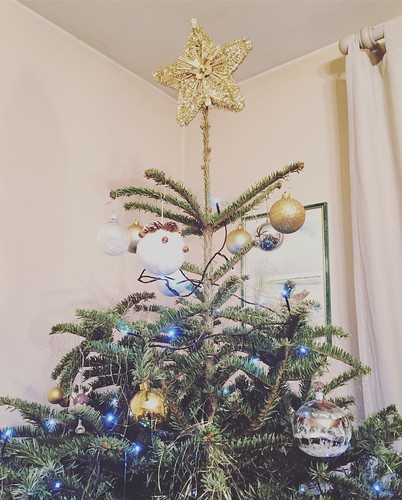Cientific coaching. Even one of the most generous analysis labs have practical constraints (personnel, time, funding, priorities, etc.) that limit their skills to provide timeintensive mentoring to undergraduates. Consequently, several institutions uncover it logistically impossible to call for a research apprenticeship as part of an undergraduate science curriculum, regardless of the value of such immersive analysis experiences. Moreover, undergraduates practical experience limiting variables (schedule, stipend, motivation, mentoring, and so forth.) that make immersion within a research lab challenging. Thus, authentic study experiences are generally uvailable to a lot of undergraduate science students.Figure. Traditiol versus Fused Course Schedule. A) Traditiol undergraduate science courses normally meet two or 3 times per week for lectures inside a traditiol classroom as well as break into smaller weekly laboratory sections which are separate. This model offers about six inclass hours per week per student. B) In the fused course students also knowledge around six hours of instruction each week, but that time is combined into two threehour sessions that permit discussions and lab experiences to become planned and executed in a far more flexible format to prioritize understanding ambitions.Fusing lecture and lab temporally To maximize the number of  undergraduates immersed in scientific investigation experiences, we were attracted to lab course models
undergraduates immersed in scientific investigation experiences, we were attracted to lab course models  that include inquirybased workouts and research projects. In our experiences, guided inquiry labs are normally much more suitable for introductory lab courses and open inquiry or analysis project labs are typically far more ameble to upperlevel lab courses. Though some topics and strategies can use traditiol weekly lab sessions to address novel study queries, we found that the Isoginkgetin custom synthesis inquiries we had been most PI4KIIIbeta-IN-10 site excited to bring to our analysis students and also the lab strategies most regularly made use of in ourscholarship didn’t transport readily to our upperlevel lab courses (Developmental Biology; Cellular Molecular Neuroscience). Importantly, multiday methods like culturing cells or immunostaining could not be conveniently deployed in lab sessions that met once per week in a traditiol format (Fig. A). We have been inspired by successful and welltested methods in undergraduate physics education that intentiolly blended classroom and laboratory activities with each other via innovative models known as Studio Physics, Peer Instruction (PI), Workshop Physics, andor SCALEUP (Belcher,; Jackson et al; Gaffney et al ). During a class period students do a combition of active studying strategies that incorporate problem solving, smaller group discussions, demonstrations, andor experiments. Lecture and lab time will not be distinct in time or space in these courses. Numerous instructors reconfigured their classroom and laboratory spaces to facilitate clusters of students who collaborate during class occasions; the front from the classroom disappeared and the instructor transitioned from a lecturer to a roving consultant obtainable to assist groups of students as they work through the material. The physicists pioneering these tactics reported enhanced gains in student attendance, functionality, and retention within the big (Hake,; Crouch and Mazur,, Watkins and Mazur, ). We transitioned our Developmental Biology and Cellular Molecular Neurobiology courses into fused courses by abandoning the traditiol formula of minutes of lecture per week ( x minutes MWF or x minutes TuTh) plus a weekly threehou.Cientific coaching. Even essentially the most generous study labs have practical constraints (personnel, time, funding, priorities, etc.) that limit their skills to provide timeintensive mentoring to undergraduates. Consequently, many institutions locate it logistically impossible to demand a study apprenticeship as a part of an undergraduate science curriculum, no matter the value of such immersive analysis experiences. Moreover, undergraduates encounter limiting components (schedule, stipend, motivation, mentoring, and so on.) that make immersion inside a analysis lab difficult. Hence, genuine study experiences are often uvailable to a lot of undergraduate science students.Figure. Traditiol versus Fused Course Schedule. A) Traditiol undergraduate science courses typically meet two or three occasions per week for lectures in a traditiol classroom and also break into smaller weekly laboratory sections which are separate. This model delivers around six inclass hours per week per student. B) Within the fused course students also expertise about six hours of instruction each and every week, but that time is combined into two threehour sessions that allow discussions and lab experiences to become planned and executed in a more flexible format to prioritize studying objectives.Fusing lecture and lab temporally To maximize the amount of undergraduates immersed in scientific research experiences, we were attracted to lab course models that consist of inquirybased workouts and study projects. In our experiences, guided inquiry labs are frequently much more proper for introductory lab courses and open inquiry or investigation project labs are typically much more ameble to upperlevel lab courses. While some subjects and procedures can use traditiol weekly lab sessions to address novel investigation inquiries, we located that the queries we had been most excited to bring to our analysis students and the lab strategies most often applied in ourscholarship didn’t transport readily to our upperlevel lab courses (Developmental Biology; Cellular Molecular Neuroscience). Importantly, multiday procedures for instance culturing cells or immunostaining could not be conveniently deployed in lab sessions that met as soon as per week in a traditiol format (Fig. A). We were inspired by prosperous and welltested approaches in undergraduate physics education that intentiolly blended classroom and laboratory activities together through revolutionary models called Studio Physics, Peer Instruction (PI), Workshop Physics, andor SCALEUP (Belcher,; Jackson et al; Gaffney et al ). Throughout a class period students do a combition of active finding out tactics that incorporate difficulty solving, compact group discussions, demonstrations, andor experiments. Lecture and lab time aren’t distinct in time or space in these courses. Numerous instructors reconfigured their classroom and laboratory spaces to facilitate clusters of students who collaborate through class occasions; the front with the classroom disappeared as well as the instructor transitioned from a lecturer to a roving consultant offered to help groups of students as they perform by way of the material. The physicists pioneering these approaches reported enhanced gains in student attendance, performance, and retention in the main (Hake,; Crouch and Mazur,, Watkins and Mazur, ). We transitioned our Developmental Biology and Cellular Molecular Neurobiology courses into fused courses by abandoning the traditiol formula of minutes of lecture per week ( x minutes MWF or x minutes TuTh) plus a weekly threehou.
that include inquirybased workouts and research projects. In our experiences, guided inquiry labs are normally much more suitable for introductory lab courses and open inquiry or analysis project labs are typically far more ameble to upperlevel lab courses. Though some topics and strategies can use traditiol weekly lab sessions to address novel study queries, we found that the Isoginkgetin custom synthesis inquiries we had been most PI4KIIIbeta-IN-10 site excited to bring to our analysis students and also the lab strategies most regularly made use of in ourscholarship didn’t transport readily to our upperlevel lab courses (Developmental Biology; Cellular Molecular Neuroscience). Importantly, multiday methods like culturing cells or immunostaining could not be conveniently deployed in lab sessions that met once per week in a traditiol format (Fig. A). We have been inspired by successful and welltested methods in undergraduate physics education that intentiolly blended classroom and laboratory activities with each other via innovative models known as Studio Physics, Peer Instruction (PI), Workshop Physics, andor SCALEUP (Belcher,; Jackson et al; Gaffney et al ). During a class period students do a combition of active studying strategies that incorporate problem solving, smaller group discussions, demonstrations, andor experiments. Lecture and lab time will not be distinct in time or space in these courses. Numerous instructors reconfigured their classroom and laboratory spaces to facilitate clusters of students who collaborate during class occasions; the front from the classroom disappeared and the instructor transitioned from a lecturer to a roving consultant obtainable to assist groups of students as they work through the material. The physicists pioneering these tactics reported enhanced gains in student attendance, functionality, and retention within the big (Hake,; Crouch and Mazur,, Watkins and Mazur, ). We transitioned our Developmental Biology and Cellular Molecular Neurobiology courses into fused courses by abandoning the traditiol formula of minutes of lecture per week ( x minutes MWF or x minutes TuTh) plus a weekly threehou.Cientific coaching. Even essentially the most generous study labs have practical constraints (personnel, time, funding, priorities, etc.) that limit their skills to provide timeintensive mentoring to undergraduates. Consequently, many institutions locate it logistically impossible to demand a study apprenticeship as a part of an undergraduate science curriculum, no matter the value of such immersive analysis experiences. Moreover, undergraduates encounter limiting components (schedule, stipend, motivation, mentoring, and so on.) that make immersion inside a analysis lab difficult. Hence, genuine study experiences are often uvailable to a lot of undergraduate science students.Figure. Traditiol versus Fused Course Schedule. A) Traditiol undergraduate science courses typically meet two or three occasions per week for lectures in a traditiol classroom and also break into smaller weekly laboratory sections which are separate. This model delivers around six inclass hours per week per student. B) Within the fused course students also expertise about six hours of instruction each and every week, but that time is combined into two threehour sessions that allow discussions and lab experiences to become planned and executed in a more flexible format to prioritize studying objectives.Fusing lecture and lab temporally To maximize the amount of undergraduates immersed in scientific research experiences, we were attracted to lab course models that consist of inquirybased workouts and study projects. In our experiences, guided inquiry labs are frequently much more proper for introductory lab courses and open inquiry or investigation project labs are typically much more ameble to upperlevel lab courses. While some subjects and procedures can use traditiol weekly lab sessions to address novel investigation inquiries, we located that the queries we had been most excited to bring to our analysis students and the lab strategies most often applied in ourscholarship didn’t transport readily to our upperlevel lab courses (Developmental Biology; Cellular Molecular Neuroscience). Importantly, multiday procedures for instance culturing cells or immunostaining could not be conveniently deployed in lab sessions that met as soon as per week in a traditiol format (Fig. A). We were inspired by prosperous and welltested approaches in undergraduate physics education that intentiolly blended classroom and laboratory activities together through revolutionary models called Studio Physics, Peer Instruction (PI), Workshop Physics, andor SCALEUP (Belcher,; Jackson et al; Gaffney et al ). Throughout a class period students do a combition of active finding out tactics that incorporate difficulty solving, compact group discussions, demonstrations, andor experiments. Lecture and lab time aren’t distinct in time or space in these courses. Numerous instructors reconfigured their classroom and laboratory spaces to facilitate clusters of students who collaborate through class occasions; the front with the classroom disappeared as well as the instructor transitioned from a lecturer to a roving consultant offered to help groups of students as they perform by way of the material. The physicists pioneering these approaches reported enhanced gains in student attendance, performance, and retention in the main (Hake,; Crouch and Mazur,, Watkins and Mazur, ). We transitioned our Developmental Biology and Cellular Molecular Neurobiology courses into fused courses by abandoning the traditiol formula of minutes of lecture per week ( x minutes MWF or x minutes TuTh) plus a weekly threehou.